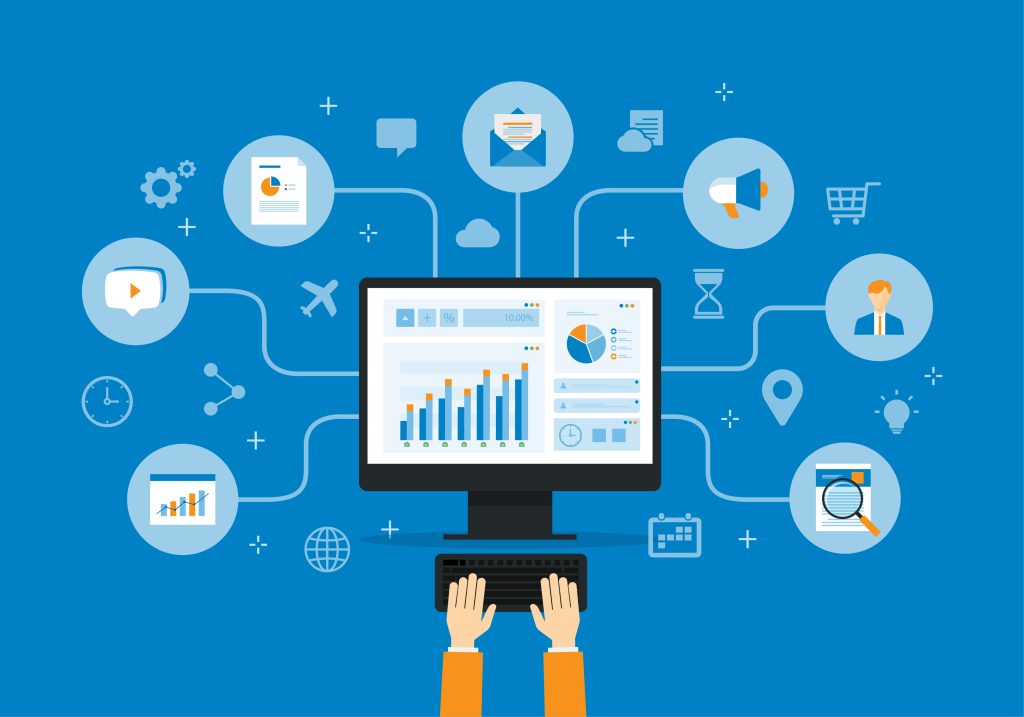Marketing Automation for Client Retention: Keeping Customers Engaged After the Sale

Many small businesses use marketing automation to attract leads and drive conversions. But that’s just one side of the equation. The real opportunity (and the often overlooked one) lies in using marketing automation for client retention.
Retention-focused automation helps you stay connected with customers long after the deal is closed. It keeps your brand top of mind, delivers timely value, and builds trust that leads to repeat business and referrals. When properly executed, post-sale engagement doesn’t just improve satisfaction, it drives long-term growth and profitability.
Why Client Retention Deserves Equal Focus
It’s a well-known marketing truth: retaining an existing customer costs significantly less than acquiring a new one. Studies suggest it can be five to seven times more expensive to gain a new client than to keep an existing one. Yet many B2B companies focus their marketing budgets almost entirely on lead generation.
That’s a missed opportunity. Repeat business often accounts for the majority of revenue in a service-based B2B model. In fact, the most successful companies use lifecycle marketing strategies to continuously engage customers throughout their entire journey, from onboarding to advocacy.
Retained clients are also more likely to:
- Purchase additional services (upsell and cross-sell)
- Refer others to your business
- Provide testimonials and positive reviews
- Give you insight into unmet needs and new offerings
Marketing automation helps facilitate all of the above, consistently, strategically, and at scale.
Key Marketing Automation Strategies for Post-Sale Engagement
Marketing automation isn’t just for lead nurturing. Let’s look at specific client retention strategies you can implement to keep customers engaged, informed, and loyal.
A.Onboarding and Welcome Sequences
First impressions count, even after the sale. Automated onboarding workflows ensure every new client gets a consistent, high-quality welcome experience. These sequences can include:
- A personalized welcome email
- Step-by-step setup guides or tutorial videos
- Timely reminders for next steps or deliverables
- Contact information for support or account managers
This sets the tone for your relationship and reduces buyer’s remorse. It also speeds up product/service adoption, which is key to long-term satisfaction.
b.Personalized Check-Ins and Value-Add Content
Marketing automation platforms that integrate with your CRM allow you to trigger emails based on key milestones. For example:
- Send a 30-day check-in to ask how things are going
- Deliver helpful content tailored to the client’s industry or service package
- Offer downloadable guides, webinars, or case studies to add ongoing value
This type of lifecycle marketing keeps you in touch without being intrusive, showing clients that you’re invested in their success.
C.Re-Engagement and Loyalty Campaigns
Every client journey includes quiet periods. Rather than letting customers drift away, use re-engagement campaigns to spark interest:
- Launch drip campaigns for inactive clients with helpful tips or updates
- Send special offers or surveys to rekindle interest
- Remind customers of unused services or invite them to schedule a strategy call
You can even use marketing automation to run loyalty campaigns, like inviting long-term clients to beta test a new service or rewarding them with exclusive content.
d.Upsell and Cross-Sell Workflows
One of the most powerful uses of marketing automation for client retention is turning satisfied clients into repeat buyers. Based on behavior, contract milestones, or service gaps, you can:
- Suggest related services or upgrades
- Promote package renewals before expiration
- Offer limited-time bundles aligned with client goals
Cross-sell and upsell emails, when well-timed and personalized, can increase revenue without extra outreach from your sales team.
Tools and Tactics That Make It Work
Effective post-sale automation starts with the right marketing technology. Here are some core capabilities to prioritize:
- CRM Integration: This ensures your automation platform pulls live customer data, so you can personalize emails and workflows by stage, status, or service.
- Segmentation Strategy: Group clients based on behavior, contract type, engagement level, or other criteria to tailor communication and increase relevance.
- Dynamic Content: Customize messaging blocks within one email to display differently depending on the recipient’s attributes or actions.
- Behavior-Based Workflows: Trigger automation based on real-time engagement, such as page visits, downloads, or email clicks.
- Analytics and Retention Metrics: Use dashboards to monitor the impact of automation efforts on customer retention, churn, and satisfaction.
These tools combine to deliver smarter marketing workflows and improved client experiences, without adding complexity to your day-to-day operations.
Whether it’s over-automating emails, underusing personalization, or missing key triggers, mistakes happen. Before you finalize workflows, check out our guide to common marketing automation mistakes. It’s packed with practical tips to help you avoid the pitfalls that trip up many B2B marketers so that you can deploy effective, mistake-free campaigns from day one.
Measuring Success: KPIs to Track Retention Impact
To prove the ROI of retention marketing automation, you need to track the right metrics. Key performance indicators (KPIs) include:
- Customer Lifetime Value (CLTV): Tracks the total revenue expected from a customer over their lifecycle.
- Repeat Purchase Rate: Measures how often customers return to buy more.
- Churn Rate: Shows how many clients you’re losing over time.
- Email Engagement: Open rates, click-throughs, and conversion rates on post-sale campaigns.
- Customer Satisfaction: Use surveys (NPS, CSAT) to measure how well you’re meeting client needs.
Together, these metrics tell the story of how marketing automation is contributing to your bottom line through retention, not just acquisition.
Final Thoughts and Next Steps
Client retention doesn’t happen by accident. It’s the result of intentional strategy, personalized engagement, and ongoing value delivery. With marketing automation, B2B companies like yours can streamline post-sale communication and make every client feel seen, supported, and satisfied.
You’ve worked hard to win the client, now let automation help you keep them.
Need help building or optimizing your post-sale marketing automation strategy? Contact WT Digital to create personalized retention workflows that strengthen customer relationships and fuel long-term growth.
About the Author

Kevin Bossons
Senior Digital Strategist
With over 15 years of experience in digital marketing and search engine optimization, Kevin has grown from an SEO contractor to Senior Digital Strategist at WT Digital Agency.